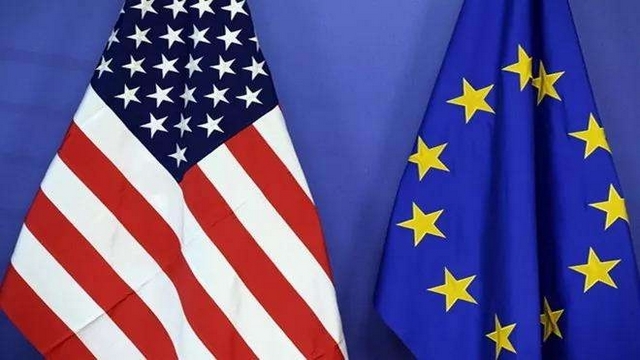
In April 2025, the US government set off a new round of trade policy storm in the name of "reciprocal tariffs", whose wide scope and radical tax rate setting are rare in the history of modern international trade. This economic action, with the slogan "protect American workers", not only failed to calm market anxiety, but triggered global supply chain turmoil, rising inflation risks and multinational countermeasures, and ultimately put the United States itself into the dual test of economic and diplomatic.
On April 2, the US government announced additional tariffs on global trading partners, of which the tax rate on Chinese goods is up to 34%, and the tax rate on Vietnam, South Africa and other countries has climbed to 46% to 50%. Unlike in the past, this policy is based on the concept of "reciprocal tariffs", which goes far beyond traditional trade barriers, covering VAT, non-market policies, currency manipulation and other broad categories, and even includes Heard Island, an Australian overseas territory near Antarctica, in the list of taxes - although only penguins and seals live there. The US Trade Representative claims that the tax rate calculation is based on a "scientific formula," but analysts point out that its essence is to simply convert the trade deficit into a punitive tax, which has been dubbed "Trump math."
Despite the White House's claim that tariffs will "reinvigorate manufacturing," the market reaction has been the opposite. On the day of the policy announcement, the market value of the seven major technology companies in the United States evaporated more than $700 billion, and companies that rely on global supply chains such as Apple bore the brunt of the impact, with estimated gross margins or 9%. The Franklin Templeton Institute warned that if the average tariff rate rose to 22 percent, the highest level in nearly a century, American households could spend $4,200 more a year, and the tax cuts pushed by Republicans would offset less than half of the burden, resulting in a net tax increase of $1,900 for households in 2025. What's more, the cost of automobile manufacturing is expected to soar by $3,000 to $12,000 / car, and the profits of Japanese car companies may be cut in half, and Hyundai Group is forced to spend $21 billion to build factories in the United States to avoid risks.
The United States' "indiscriminate strike" quickly triggered a multinational counterattack. China announced a 34% tariff on all US imports from April 10, with a clear emphasis on "upholding international trade rules"; The European Union, Canada and other countries are also planning targeted measures. It is worth noting that countries such as India, which was once regarded as an "alternative to China" by the United States, have been passive due to high tariffs of 24%-26%, and their ambitions to "take over the supply chain" have suffered setbacks. The analysis pointed out that the United States tried to reshape the trade pattern with tariffs, but accelerated countries to move closer to regional cooperation - the deepening of the China-Japan-South Korea supply chain, the promotion of the "Belt and Road" initiative, is forming an institutional defense line against unilateralism.
In the face of the tariff storm, multinational companies' strategies are polarized. Tesla has become a "beneficiary" with 75% of localized parts, and the uptrend in its stock price has been interpreted as "the opponent's deceleration is its own acceleration." More companies choose a roundabout layout: China Kai can absorb the tariff impact through its North American subsidiary, and Dalian Heavy Industry will control the impact in a "minimal" range by diversifying the Southeast Asian market. Ironically, instead of benefiting as expected, US manufacturing is suffering from a surge in the cost of imported raw materials - the price of 40 per cent of auto parts supplied by Mexico has directly pushed up the cost of local production.
At present, the US policy faces three contradictions: First, the tariff revenue is estimated to reach 600 billion US dollars, but its regressive burden on low - and middle-income groups, shaking the Republican Party's core voter base; Second, the Fed is caught in the dilemma of raising interest rates if inflation persists, which could exacerbate the risk of a recession. Third, the loss of diplomatic credibility, such as the doubling of Canadian timber tariffs to 34.45%, has deepened the rift between traditional Allies. As J.P. Morgan put it, "large shocks are accompanied by non-linear effects," and when tariffs turn from bargaining chips into regular tools, the ripple effects could be far beyond the control of policy architects.
What began as an "America First" tariff campaign is shaping up as a dramatic reconfiguration of the global economic order. When the absurd story of Antarctic penguins being "taxed" becomes a reality, it may reflect not only the alienation of trade logic, but also the fatal paradox of unilateralism in the age of globalization - the higher the beggar-thy-neighbor wall is built, the more fragile the foundation of prosperity within it.

Since 2022, the Fed has cumulatively reduced its balance sheet by $2.4 trillion through quantitative tightening (QT) policies, leading to a near depletion of liquidity in the financial system.
Since 2022, the Fed has cumulatively reduced its balance sh…
On December 11 local time, the White House once again spoke…
Fiji recently launched its first green finance classificati…
Recently, the European Commission fined Musk's X platform (…
At the end of 2025, the situation in the Caribbean suddenly…
The U.S. AI industry in 2025 is witnessing a feverish feast…